“I write to remember, to challenge my initial though and intuition” -SP
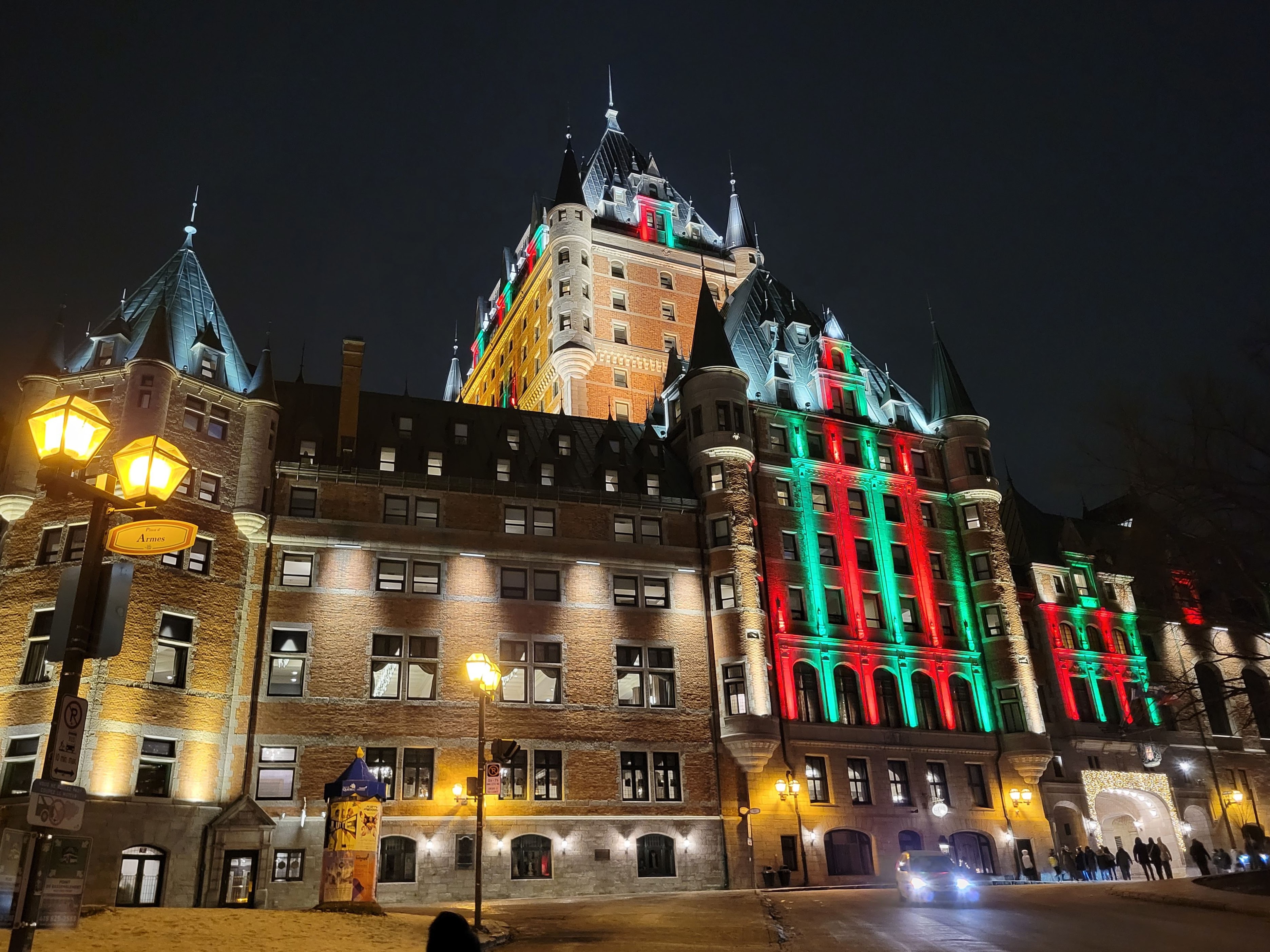
Day 1, we started our trip early in the morning to avoid Toronto traffic. Our two sedans were packed with food, luggage, and excitement. The car began moving around 5:40 a.m. Most of us hadn’t slept the night before, so we quickly dozed off after a few moments of silence.
Day 1:
The car seemed to slow down, so I opened my eyes. We had reached our first ONRoute stop. According to ONRoute website [1], there are 23 locations along Highways 400 and 401. Highway 401 runs east to west from Windsor to Quebec, while Highway 400 starts in Maple Leaf (just south of North York), passes through Vaughan, and continues north to Parry Sound. The numbering system for highways in Ontario is quite different from the US. In the US, odd number is for north-south and even one for east-west [2]. We noticed that Quebec’s highways has similar numbering system as in the US.
ONRoute, or Ontario Route, is similar to a rest stop in the U.S. However, rest stops usually only have restrooms, water, and parking spots. In contrast, ONRoute features several fast-food and coffee shops.
At this stop, Starbucks and Tim Hortons were right next to each other. I wondered why Starbucks would compete with Tim Hortons in the same location. Tim Hortons had lower prices and a variety of breakfast options. However, I soon noticed that while many people lined up at Tim Hortons, some left because the staffs struggled to keep up with the large number of orders. That was and advantage for Starbucks. Although it might be pricier, Starbucks also have good breakfast options. Starbucks’ strategy here might be to saturate the market. After a quick search, I found out that Burger King acquired Tim Hortons in 2014. Today, its parent company is Restaurant Brands International. Besides, RBI also own Popeyes and two more companies.
After a 20-minute break, we continued our journey. As we left, I noticed a Tesla driving by, which made me wonder—
what if we used an electric vehicle (EV) instead of a gasoline car? Would we be able to reach Quebec with just 20–30 minutes of charging at each stop?
A quick search on Reddit revealed the challenges EV drivers face. They need to plan their route carefully and locate charging stations every 150–200 km [3]. Another important factor is winter. Cold weather reduces battery capacity, and heating the cabin consumes additional energy. I believe that faster charging and better infrastructure would make EV travel much easier.
While in the car, we talked about animal friends we often see around campus. At Waterloo, we see Mr. Goose, owls, squirrels, and groundhogs all year round. In the summer and fall, llamas, mules, and small horses or ponies come to Waterloo Park after Winter retreat.
The horses there seem to prefer light colors, especially white. They tend to approach people wearing white shirts more than those in other colors. I guess this might be because many students wear white shirts in the summer and often feed them. Little ponies learn from rewards and actions.
Shifting back to animals discussion, Linh wanted to see a moose and told us how massive it is compared to a human. I also have a friend who came to Canada just to see a moose at the zoo!
“So, whats the difference between moose, deer, and caribou?” I asked.
The term “deer” is broad. In Canada, particularly at Jasper National Park, near the Alberta-British Columbia border, we can see moose, elk, and woodland caribou.[4]. An interesting fact about deer is that they grow antlers to attract females. In winter, they shed their antlers to conserve energy, and those antlers become a source of minerals for small mammals. Caribou, also known as reindeer, have antlers that curve forward in a C shape when viewed from the side. Moose is bigger than caribou and it’s antlers are like open hands with curved fingers and palm facing upward.
As for me, I really want to see polar bears, Kermode bears, and beavers in Canada!
Back then, we used to play Punch Buggy on road trips—a game where we would punch another player when we spotted a Volkswagen Beetle and pointed it out. However, since Beetles are rare on the road now, we started paying attention to license plates and car colors instead. We noticed that every province has a slogan; for example, Quebec’s slogan is “Je me souviens,” which translates to “I remember” in English. We saw this slogan once again in the Parliament of Quebec.
We also saw a red license plate with white text. After doing some research, we found out it was a diplomatic license plate.
As we got closer to Quebec, mountains appeared and we initially thought they might be part of the Appalachian Range, which stretches across 15 U.S. states. However, we later discovered they were actually part of the Laurentian Mountains, which covers eastern Canada from Quebec to Labrador. This mountain range is also one of the oldest in the world.
When we passed the welcome sign of Quebec, we noticed that all the road signs were in French. In some areas, the traffic lights were hung horizontally instead of vertically. At first, we thought this was to save space, as the clearance between the poles and vehicles seemed quite low. Later, we learned that horizontal traffic lights have two points of contact, which makes them more stable in strong winds.
When we arrived in Quebec, the temperature was -10°C, making it difficult to walk around and explore the city. The cold was unbearable! Luckily, I had brought a beanie to cover my ears. We got to the cabin in the evening, and it was great. It was my first time lighting up a wood stove. The game is to start a fire with wooden stick, matches, and whatever we could find to use as starter. After a few camping trips, I’ve learned that air and space are crucial to start a fire. So, I first laid down the small sticks to create a bed, then inserted pieces of cardboard or paper towels underneath the kindling bed to help ignite the fire.
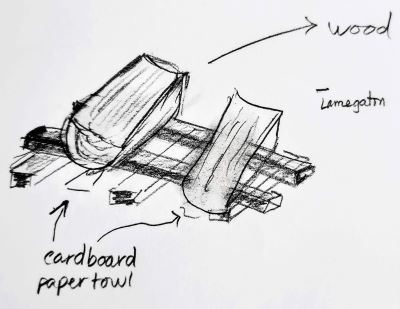
Placing kindling bed on top is another setup to start a fire. This method is claimed to be more efficient and uses less wood. I guess it will take more time, but I will give it a try next time.
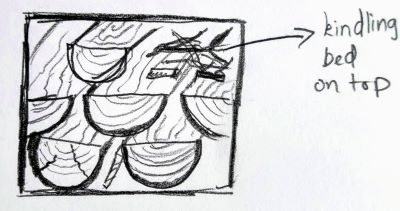
And finally, the fire was lit. We sat around the fire, enjoy the warmth, relaxation and a touch of solitude—just as our ancestors did two million years ago.
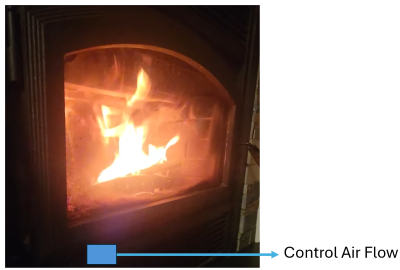
(Fireplace has a switch to turn on and off the internal fan. It also has a level to control the amount of influx air at the bottom)
Day 2
I slept on the couch, the opposite side of the fireplace. The night was warm and quiet, I wished I could stay there for the entire Winter–just to read, write and learn like Mr. Thoreau stayed in his friend’s cabin [5].
Waking up knowing that we don’t need to improve or fix anything. There was no need to thrive, to run for our life against the time poison jar that we drank when we first see the world, it was blessed and amazing feeling. Those small moments, in my opinion should not last long. They should be small sparks that keep ourselves moving in a correct direction like a feedback loop in Control System. To get the desired output we need to have a suitable function, and a feedback loop to correct errors.
I got up and took a moment to look around. The cabin’s living room has glass doors that let us see the vast area around. Ground was covered with heavy snow from yesterday.
“How does grass survive under all this snow?”
I once asked a friend after an Embodied Intelligence class at Waterloo. I observed the grass for a while. Although it was covered with snow, it still survived after Winter. Snow acts as an insulator, much like an igloo. Since snow consists of 90–95% air, it traps heat and prevents extreme temperature changes. This makes it a better insulator than ice, which lacks air pockets and conducts heat more easily [6].
I started the fire again, knowing my friends would need to warm up. Whenever I camp in the Sierra Nevada area or sleep in unfamiliar places, I always feel the coldest between 3–6 AM. One reason is that during the day, the earth absorbs heat from the sun. After sunset, it slowly releases this heat. As time passes, the reflected energy weakens, making the early morning the coldest part of the night.
Another problem happened, we had total 12 people, and only two washrooms. Knowing each would spend different times in the washroom, how can we schedule it. It reminded me of scheduling problem in computer science or algorithm course [7]. How did we solve it that day? Easy, first come, first served, because we did not care much. It was vacation!
Basilica of Sainte-Anne-de-Beaupré
Our first destination on Day 2 is Basilica of Sainte-Anne-de-Beaupré. Below is the timeline of the basilica.
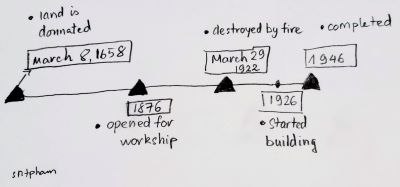
- March 8,1658: land is donated
- 1876: the chapel is opened for worship
- March 29, 1922: the shrine is destroyed by fire
- 1926: the basilica is built
- 1946: the project is completed
On the walls, there were stories from the Bible. I was lucky to have a friend who could explain each one, from the birth of Jesus to His resurrection. I also learned that each saint is a patron of a specific aspect of life. For example, St. Anne is the patron saint of mothers and women in labor. The architecture of Catholic churches is so magnificent that I’ll need time to read and research to fully understand it. That will be a topic for a future post.
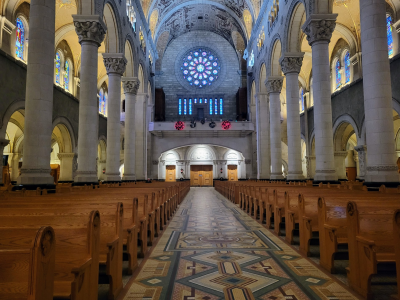
Parliament of Quebec
Moving from the solemn basilica, we drove to center of Quebec City to visit the Parliament of Quebec.
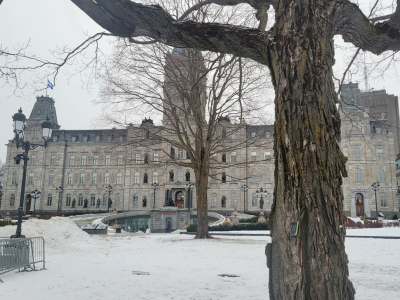
In order to enter, we needed to register online and went through a security check. The wall had different images, and the one below is Flying Canoe legend [8]
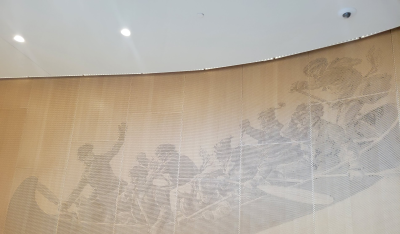
At the first floor, we could see the top of the building. We sat and waited for our tour guide there. Our tour guide was a friendly lady. She first took us to a bridge that changed colors and played different tones as we walked across. Next, she led us upstairs to a hall.
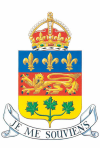
Standing there, she pointed out different coast of arms: Azure three fleurs-de-lis, Gules a lion passant guardant, sprig of three maple leaves Vert. They represented France, England, and Canada respectively. Next, we had a chance to visit Red Room, a meeting place for members of the House of Commons. In Canada, legislature consists of three parts: Monarch, The Senate (Upper House), The House of Commons (Lower House). Members of the Senate are appointed by the Prime Minister and Governor General, based on recommendations from an independent Advisory Board. On the other hand, members of the House of Commons are elected by citizens. Laws in Quebec are written in both English and French. We also wanted to visit the library, but it was closed by the time we arrived.
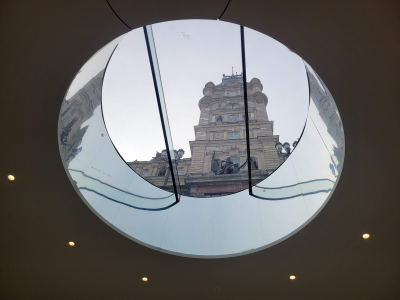
Saying bye to the parliament, we walked around Quebec City.
Note
Thank you for reading! I need to cut it short to prepare for school tomorrow. Keep learning and writing!
Also, a big thanks to my friends who joined me on this trip—it wouldn’t have been complete without you!
Edit
1/10/2025: Reread make the setence easier to read.
1/6/2025: First Published.
Reference
[1] “Find Your Nearest ONroute Location.” Accessed: Jan. 03, 2025. [Online]. Available: https://www.onroute.ca/locations
[2] “Interstate System - Design - Federal Highway Administration.” Accessed: Jan. 05, 2025. [Online]. Available: https://www.fhwa.dot.gov/programadmin/interstate.cfm
[3] sorooshsorkhani, “Toronto to Montreal road trip with EV,” r/canadatravel. Accessed: Jan. 05, 2025. [Online]. Available: www.reddit.com/r/canadatravel/comments/1gk8s9i/toronto_to_montreal_road_trip_with_ev/
[4] G. of C. Parks Canada Agency, “Deer family.” Accessed: Jan. 03, 2025. [Online]. Available: https://parks.canada.ca/pn-np/ab/jasper/nature/faune-wildlife/cervides-deer
[5] “Walden.” Accessed: Jan. 05, 2025. [Online]. Available: https://www.goodreads.com/book/show/16902.Walden
[6] “Heat energy,” Science Learning Hub. Accessed: Jan. 05, 2025. [Online]. Available: https://www.sciencelearn.org.nz/resources/750-heat-energy
[7] R. Ge and R. Kuditipudi, “Lecture 7: Greedy Algorithms II”.
[8] “Enchanted Canoe - Canada’s History.” Accessed: Jan. 06, 2025. [Online]. Available: https://www.canadashistory.ca/explore/transportation/enchanted-canoe
[9] F. Mowat, Never Cry Wolf, Reprint edition. London: Laurel, 1971.